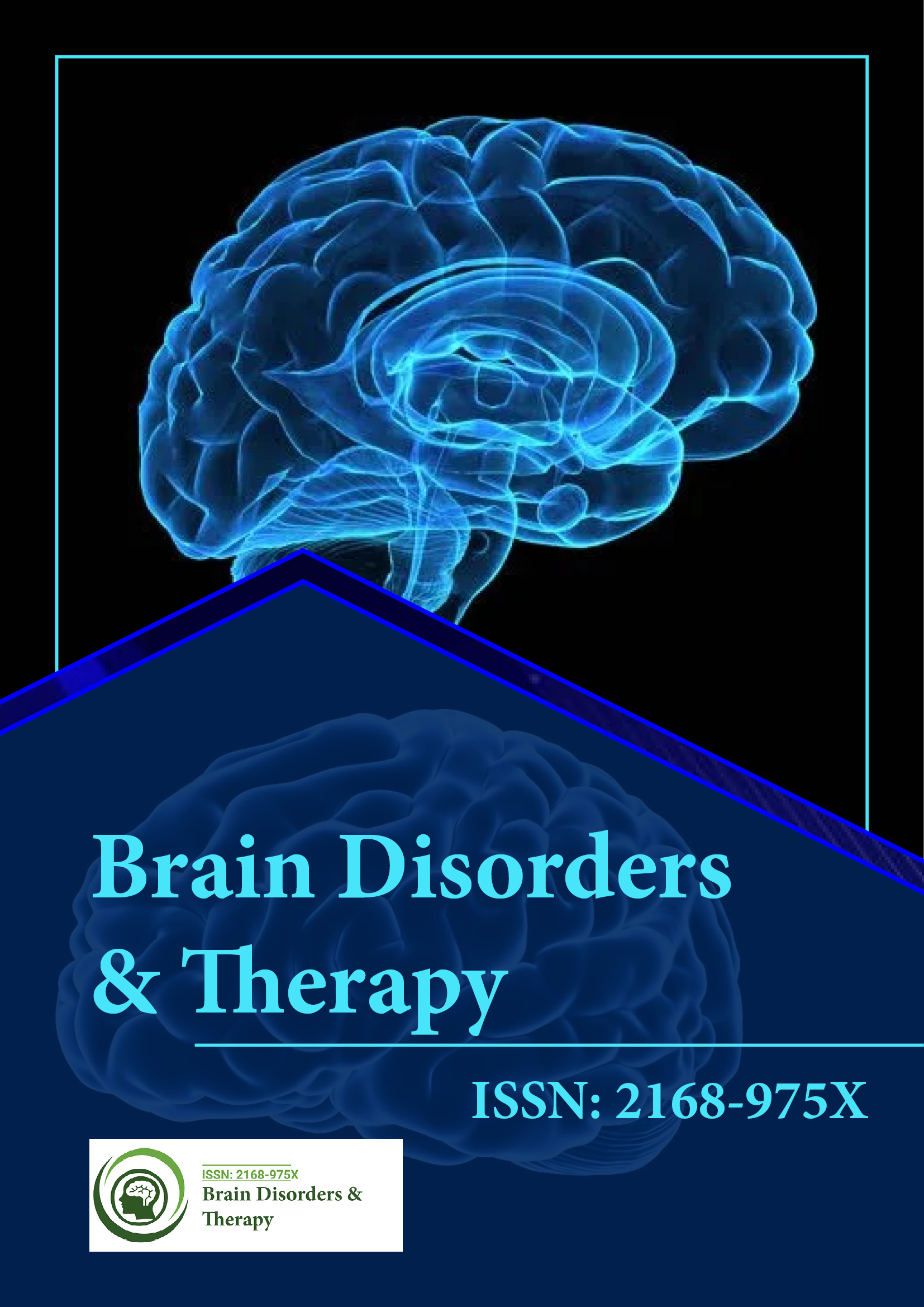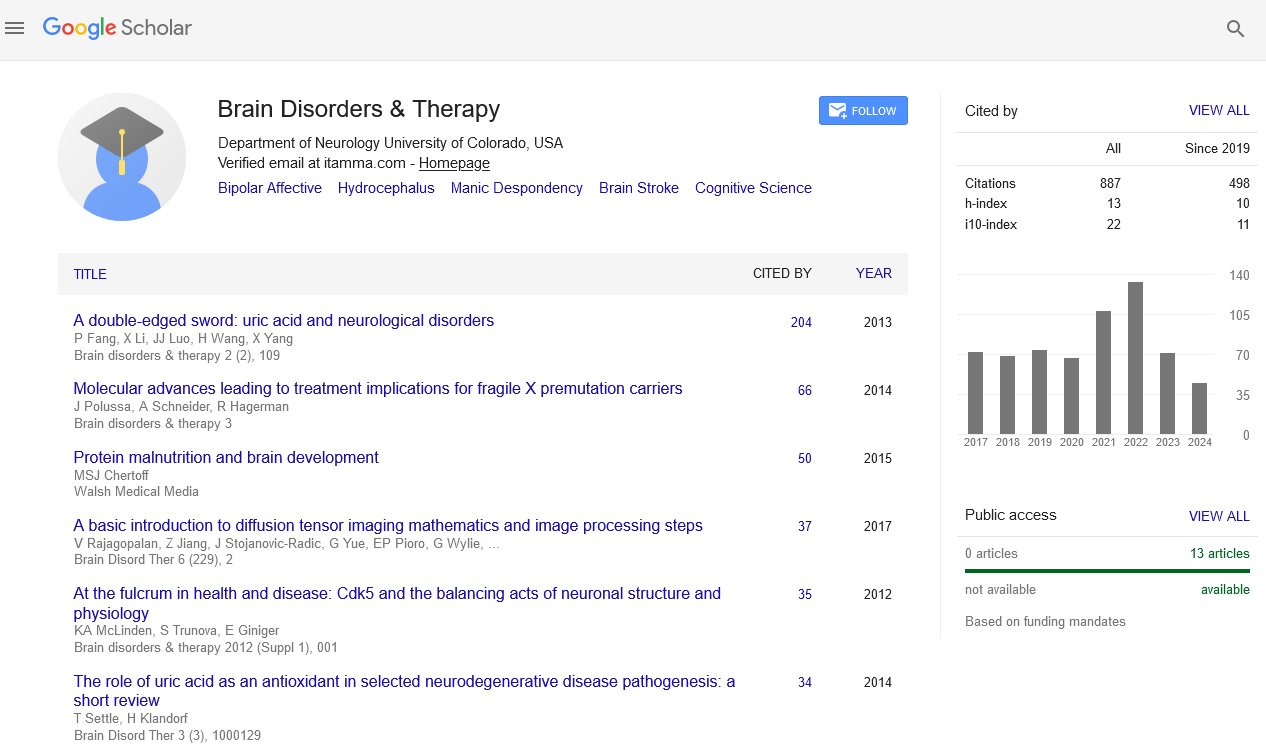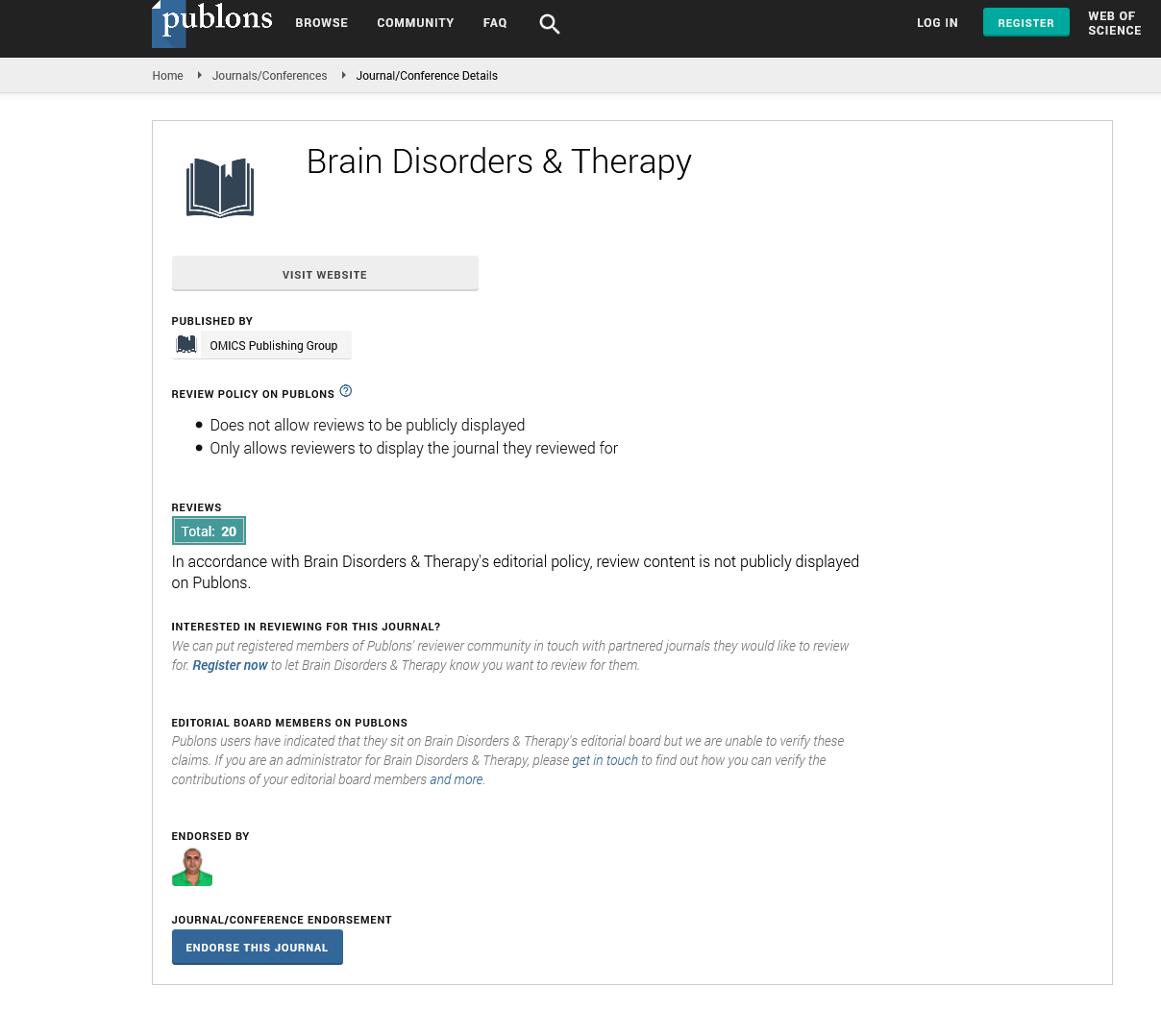Indexed In
- Open J Gate
- Genamics JournalSeek
- JournalTOCs
- RefSeek
- Hamdard University
- EBSCO A-Z
- OCLC- WorldCat
- Publons
- Geneva Foundation for Medical Education and Research
Useful Links
Share This Page
Journal Flyer

Open Access Journals
- Agri and Aquaculture
- Biochemistry
- Bioinformatics & Systems Biology
- Business & Management
- Chemistry
- Clinical Sciences
- Engineering
- Food & Nutrition
- General Science
- Genetics & Molecular Biology
- Immunology & Microbiology
- Medical Sciences
- Neuroscience & Psychology
- Nursing & Health Care
- Pharmaceutical Sciences
The relation between memory improvement and QEEG changes in three clinical groups as a result of EEG biofeedback treatment
International Conference on Neuro Oncology and Rehabilitation
July 21-22, 2016 Brisbane, Australia
Kirtley E Thornton and Dennis P Carmody
The Brain Foundation, USA
University of Medicine and Dentistry of New Jersey, USA
Scientific Tracks Abstracts: Brain Disord Ther
Abstract:
It is important to understand the relation between changes in the quantitative EEG (QEEG) variables and memory changes as a result of the EEG biofeedback treatment. With this goal in mind, the senior author reviewed his clinical files from the last 5 years and examined the QEEG data addressing relative power and coherence changes and memory (auditory and reading) improvements. The groups involved included; normal individuals wanting to improve their cognitive functioning, traumatic brain injured (TBI) subjects, þ and subjects who can best be classified as having a specific learning disability (SLD). The SLD group was divided between those who are older than 14 (adults) and those who are younger than 14 (children) in order to reference the appropriate age-related normative group values. The analysis revealed significant improvements in auditory and reading memory across all groups as well as changes on the QEEG variables. All of the groups were performing above the normative reference group on measures of auditory and reading memory in terms of percentage differences (24-97%) and standard deviations (þ1.28-1.85). The average auditory memory SD improvement was þ1.52, whereas the average percentage change was 82%. For the reading task the average memory standard deviation improvement was 1.38, whereas the percentage improvement was 154%. The experimental group was performing 1.66 SD (68%) above the control group on auditory memory and 0.90 SD (52%) above the control group on reading memory measures. For the QEEG variables, the average raw value of the Spectral Correlation Coefficient (SCC) change for alpha was 6.1 points (2.09 SD), for SCC beta1 (13-32 Hz) 6.53 points (1.81 SD) and for beta2 (32-64 Hz) 7.5 points (1.77 SD). The changes on the relative power measures were less dramatic, albeit significant. These results underlie the importance of addressing the SCC values in EEG biofeedback treatment protocols.
Biography :
Kirtley Thornton is an expertised person in Neuropsychology, Psychophysics, Cognitive Science and with 36 publications ,skilled expertise in Learning, EEG Biofeedback, Biofeedback ,Cognitive Neuroscience, Cognitive Science, Cognitive Neuropsychology, EEG Signal Processing Kirtley Thornton is an expertised person in Neuropsychology, Psychophysics, Cognitive Science and with 36 publications ,skilled expertise in Learning, EEG Biofeedback, Biofeedback ,Cognitive Neuroscience, Cognitive Science, Cognitive Neuropsychology, EEG Signal Processing.
Email: ket@chp-neurotherapy.com


